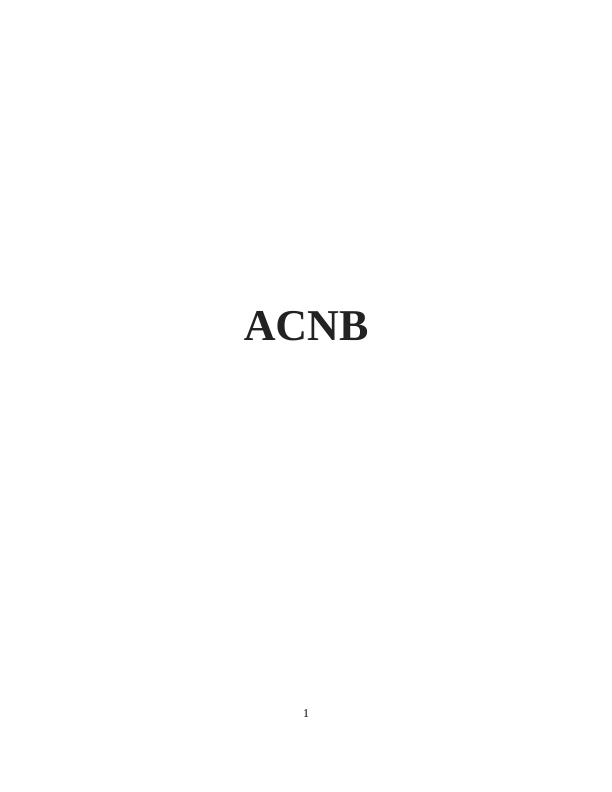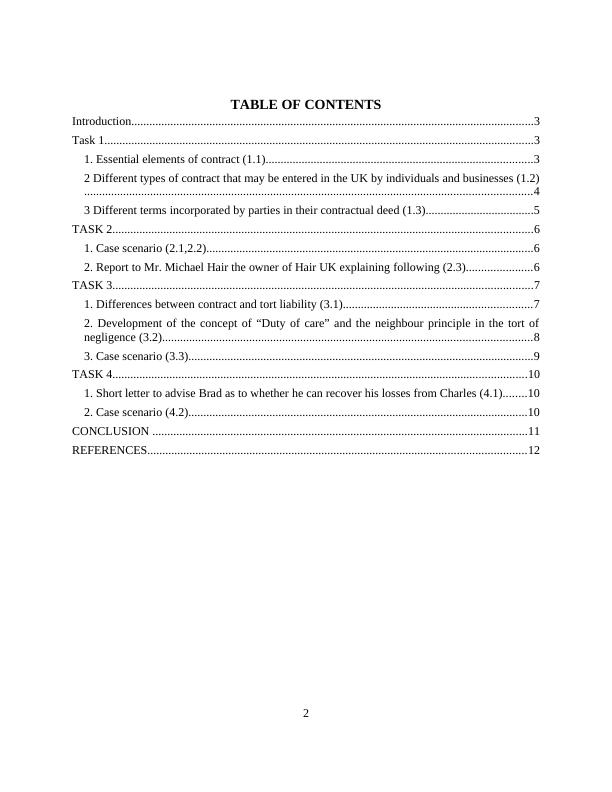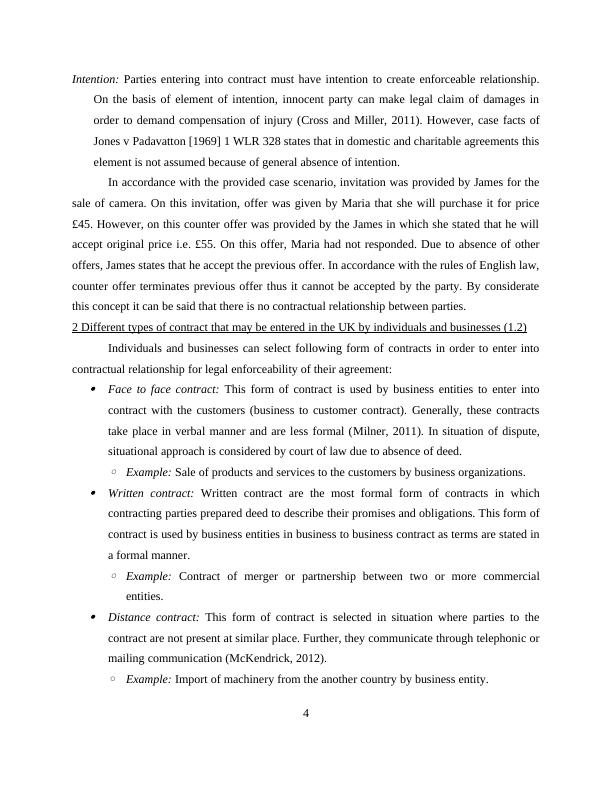Provisions of Contract and Negligence Law | Study
Added on 2020-02-05
12 Pages4164 Words55 Views
ACNB1

TABLE OF CONTENTSIntroduction......................................................................................................................................3Task 1...............................................................................................................................................31. Essential elements of contract (1.1).........................................................................................32 Different types of contract that may be entered in the UK by individuals and businesses (1.2).....................................................................................................................................................43 Different terms incorporated by parties in their contractual deed (1.3)....................................5TASK 2............................................................................................................................................61. Case scenario (2.1,2.2).............................................................................................................62. Report to Mr. Michael Hair the owner of Hair UK explaining following (2.3)......................6TASK 3............................................................................................................................................71. Differences between contract and tort liability (3.1)...............................................................72. Development of the concept of “Duty of care” and the neighbour principle in the tort ofnegligence (3.2)...........................................................................................................................83. Case scenario (3.3)...................................................................................................................9TASK 4..........................................................................................................................................101. Short letter to advise Brad as to whether he can recover his losses from Charles (4.1)........102. Case scenario (4.2).................................................................................................................10CONCLUSION .............................................................................................................................11REFERENCES..............................................................................................................................122

INTRODUCTIONContract and negligence legislation is developed in order to promote fairness in thecommercial transactions and protect interest of public (Four Essential Elements of a Contract.n.d). In order to achieve this objective, standard rules and regulations are described by the UKparliament which are necessary to be followed by parties whether there is absence of presence ofcontractual relationship (Blum, 2007). Failure for compliance of such terms can result inobligation for payment of damages in order to compensate the injury of innocent party. Presentstudy is focused on the evaluation of various provisions of contract and negligence law in orderto provide justified recommendations for the given case scenarios. For better understanding oflegal provisions, previous case precedents will be referred in this study. TASK 11. Essential elements of contract (1.1)Agreement formed by parties is said to be legally enforceable if following essentialelements are present in it:Offer: It can be defined as proposal in which one party asks another party to do or not to dosomething. Offer is required to be certain and lawful but it must be different from theinvitation for treat (Elements of Law of Contracts, 2012). In accordance with the case factsof Pharmaceutical Society of Great Britain v Boots, invitation is a way to show willingnessfor enter into negotiation thus it can be accepted as offer.Acceptance: Acceptance is consent provided by the party to whom offer was made. It must notbe modified or supported by any condition else it will be treated as conditional acceptance(Akintoye, Renukappa and Lal, 2012). According to the provisions of English law,conditional acceptance will be treated as counter offer on which further acceptance will berequired.Consideration: Agreement created by parties must be supported by valid consideration for itslegal enforceability. Consideration refers to the mutual exchange of promises (Lawfulconsideration, 2011). Case facts of Thomas v Thomas (1842) 2 QB 851 consideration mustbe fair in eyes of law but it is not mandatory to be at arm length price. 3

Intention: Parties entering into contract must have intention to create enforceable relationship.On the basis of element of intention, innocent party can make legal claim of damages inorder to demand compensation of injury (Cross and Miller, 2011). However, case facts ofJones v Padavatton [1969] 1 WLR 328 states that in domestic and charitable agreements thiselement is not assumed because of general absence of intention. In accordance with the provided case scenario, invitation was provided by James for thesale of camera. On this invitation, offer was given by Maria that she will purchase it for price£45. However, on this counter offer was provided by the James in which she stated that he willaccept original price i.e. £55. On this offer, Maria had not responded. Due to absence of otheroffers, James states that he accept the previous offer. In accordance with the rules of English law,counter offer terminates previous offer thus it cannot be accepted by the party. By consideratethis concept it can be said that there is no contractual relationship between parties. 2 Different types of contract that may be entered in the UK by individuals and businesses (1.2)Individuals and businesses can select following form of contracts in order to enter intocontractual relationship for legal enforceability of their agreement:Face to face contract: This form of contract is used by business entities to enter intocontract with the customers (business to customer contract). Generally, these contractstake place in verbal manner and are less formal (Milner, 2011). In situation of dispute,situational approach is considered by court of law due to absence of deed. ◦Example: Sale of products and services to the customers by business organizations.Written contract: Written contract are the most formal form of contracts in whichcontracting parties prepared deed to describe their promises and obligations. This form ofcontract is used by business entities in business to business contract as terms are stated ina formal manner. ◦Example: Contract of merger or partnership between two or more commercialentities.Distance contract: This form of contract is selected in situation where parties to thecontract are not present at similar place. Further, they communicate through telephonic ormailing communication (McKendrick, 2012). ◦Example: Import of machinery from the another country by business entity. 4

End of preview
Want to access all the pages? Upload your documents or become a member.
Related Documents
Aspects of Contractual and Tort Lawlg...
|12
|3995
|192
Aspects of Contract and Negligence for Business - Assignmentlg...
|14
|4795
|28
Report On Elements Of Contracts & Impact In Different Business Scenarioslg...
|12
|4117
|123
Contractual terms and conditions: Task 13lg...
|13
|3839
|131
Contract Law and Negligence Law : Assignmentlg...
|13
|3697
|147
Aspects of Contract & Negligence for Business Reportlg...
|17
|4885
|27